 August 6, 1997: In one of the most famous moments in Apple history, Steve Jobs reveals that Microsoft invested $150 million in its rival.
August 6, 1997: In one of the most famous moments in Apple history, Steve Jobs reveals that Microsoft invested $150 million in its rival.
Although often presented as an inexplicable gesture of good faith on the part of Microsoft boss Bill Gates, the cash infusion into Apple actually benefits both companies.
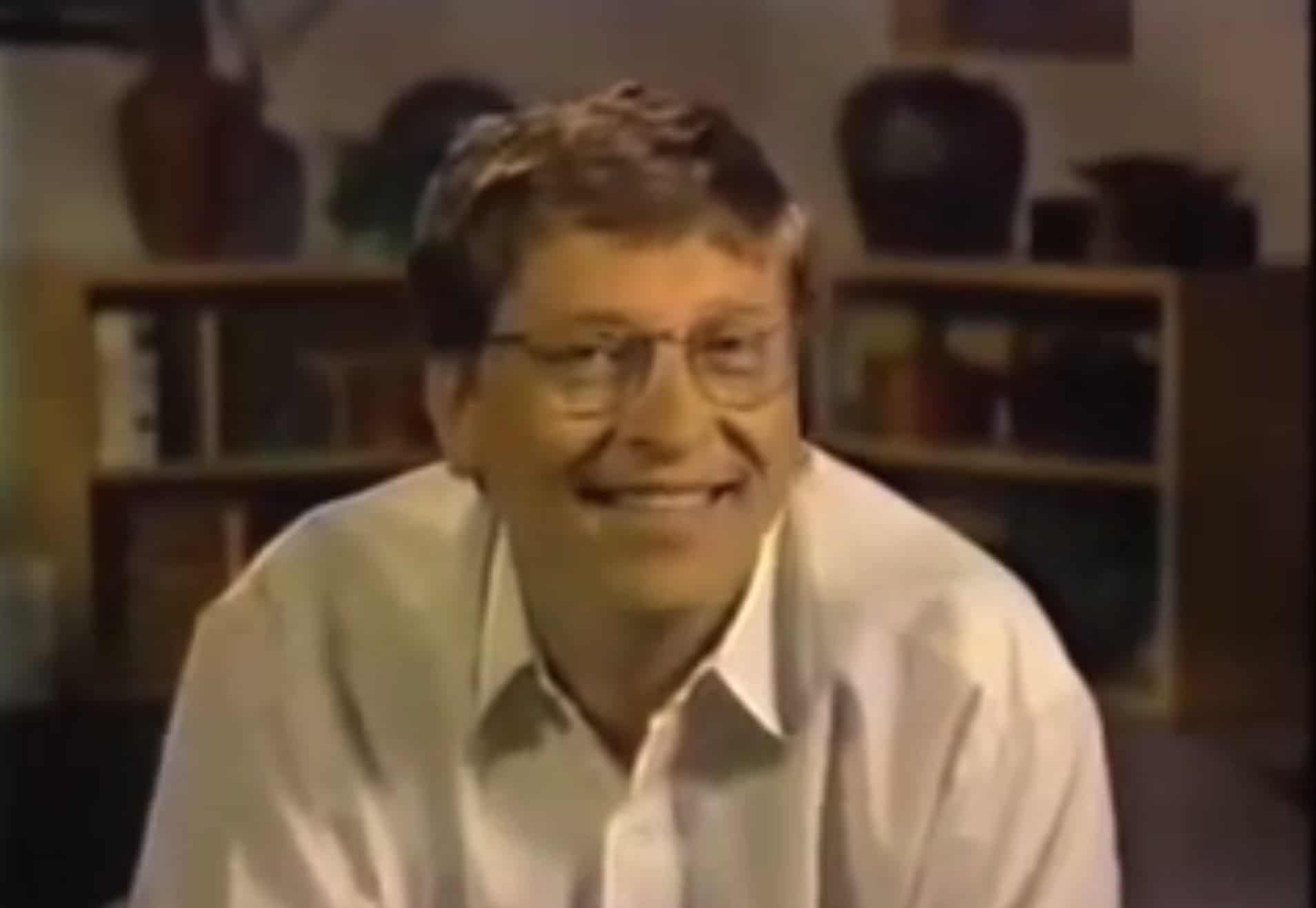
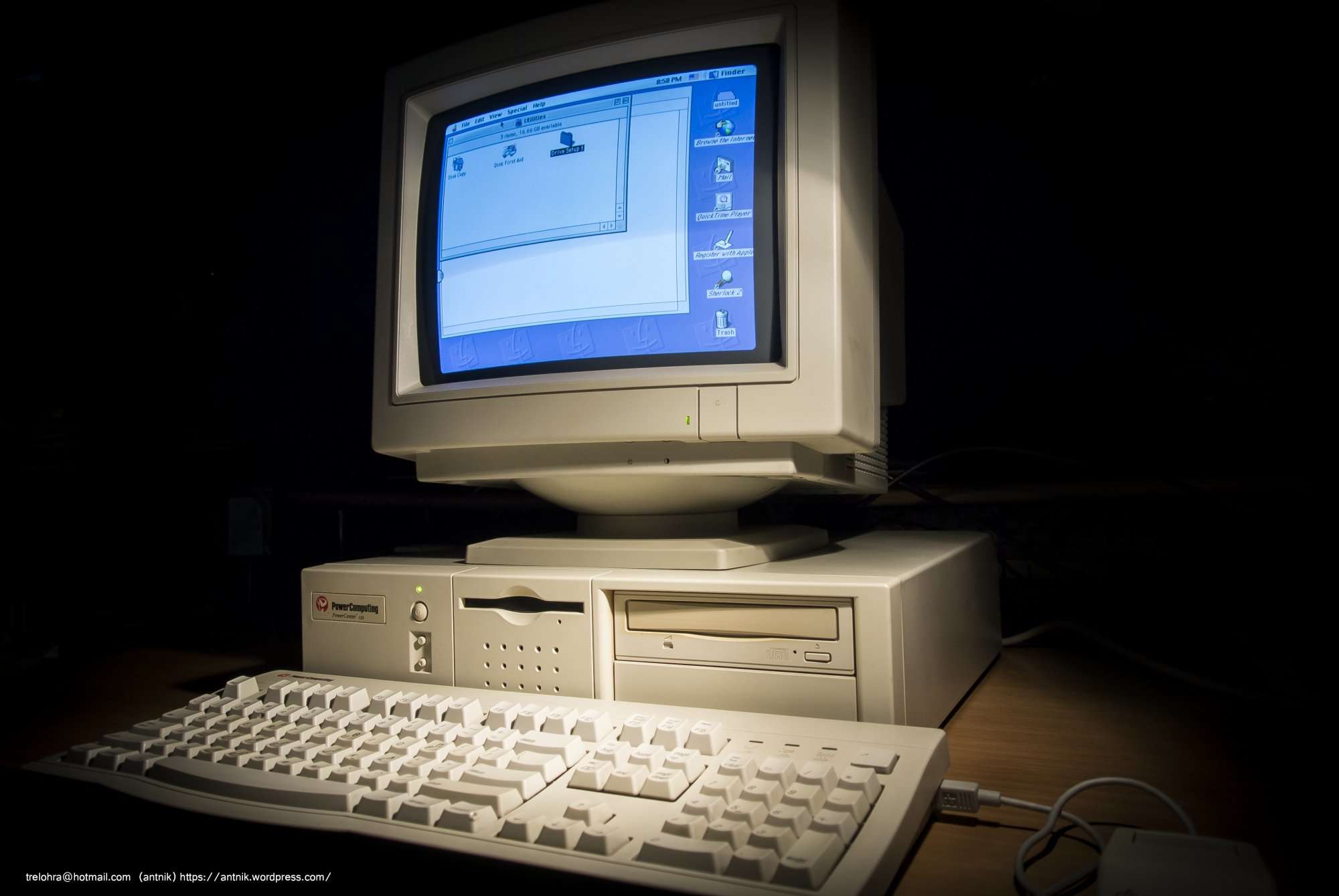
 August 5, 1997: Apple gets into a standoff with Power Computing, a maker of Macintosh clones. It marks the beginning of the end for Apple’s mid-’90s strategy of licensing the Mac operating system.
August 5, 1997: Apple gets into a standoff with Power Computing, a maker of Macintosh clones. It marks the beginning of the end for Apple’s mid-’90s strategy of licensing the Mac operating system.
 August 2, 1993: Apple debuts the MessagePad, the first product in its Newton line of handheld personal digital assistants.
August 2, 1993: Apple debuts the MessagePad, the first product in its Newton line of handheld personal digital assistants.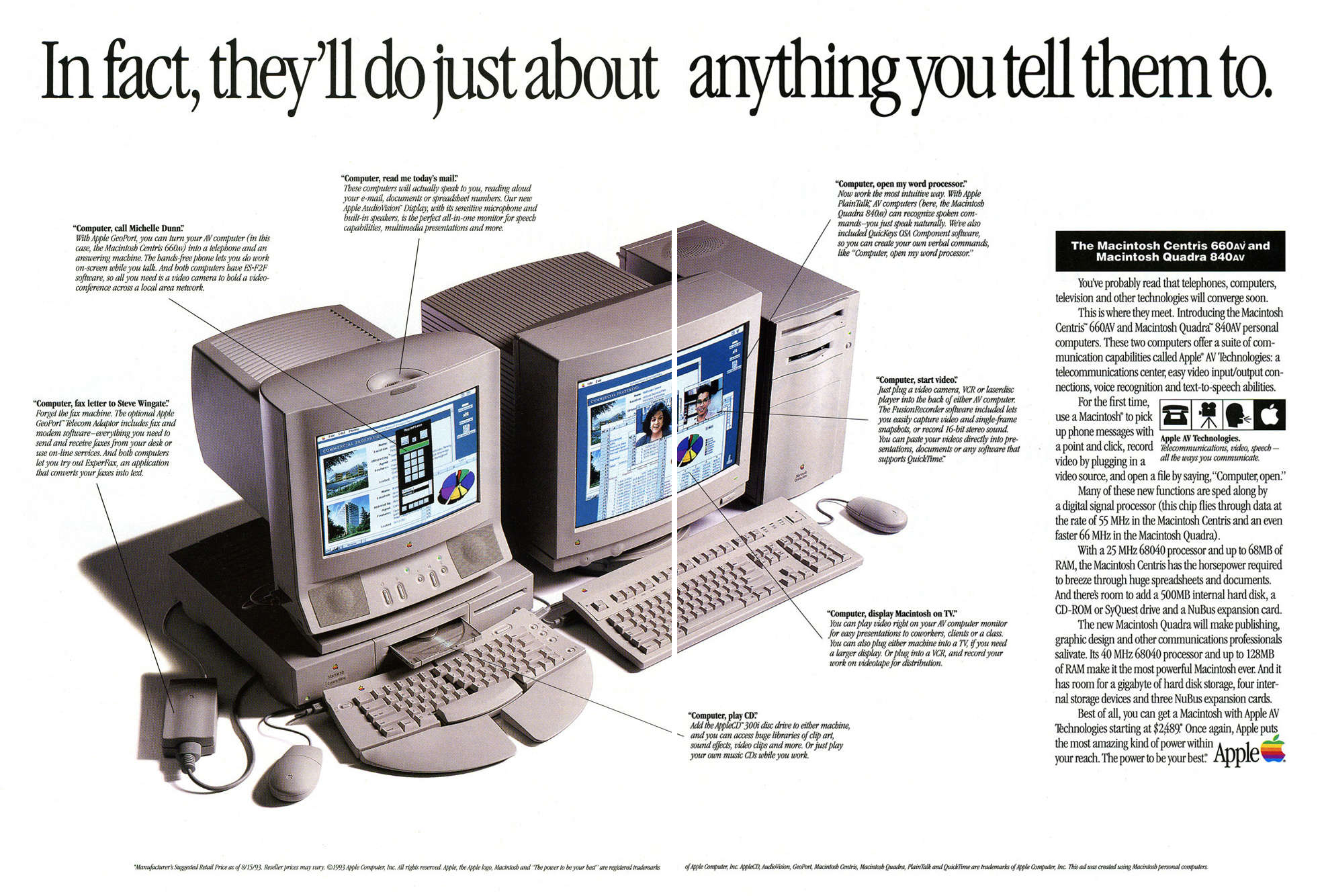
 July 29, 1993: Apple releases the Macintosh Centris 660av, a computer packed with innovative audiovisual features. These include an AppleVision monitor with microphone and speakers, and a port that can work as a modem with a telecom adapter. It also comes with the first Apple software to recognize and synthesize speech.
July 29, 1993: Apple releases the Macintosh Centris 660av, a computer packed with innovative audiovisual features. These include an AppleVision monitor with microphone and speakers, and a port that can work as a modem with a telecom adapter. It also comes with the first Apple software to recognize and synthesize speech.
 July 27, 1955: Joanna Hoffman, who will join the original Macintosh and NeXT teams and become Steve Jobs’ first right-hand woman, is born in Poland.
July 27, 1955: Joanna Hoffman, who will join the original Macintosh and NeXT teams and become Steve Jobs’ first right-hand woman, is born in Poland.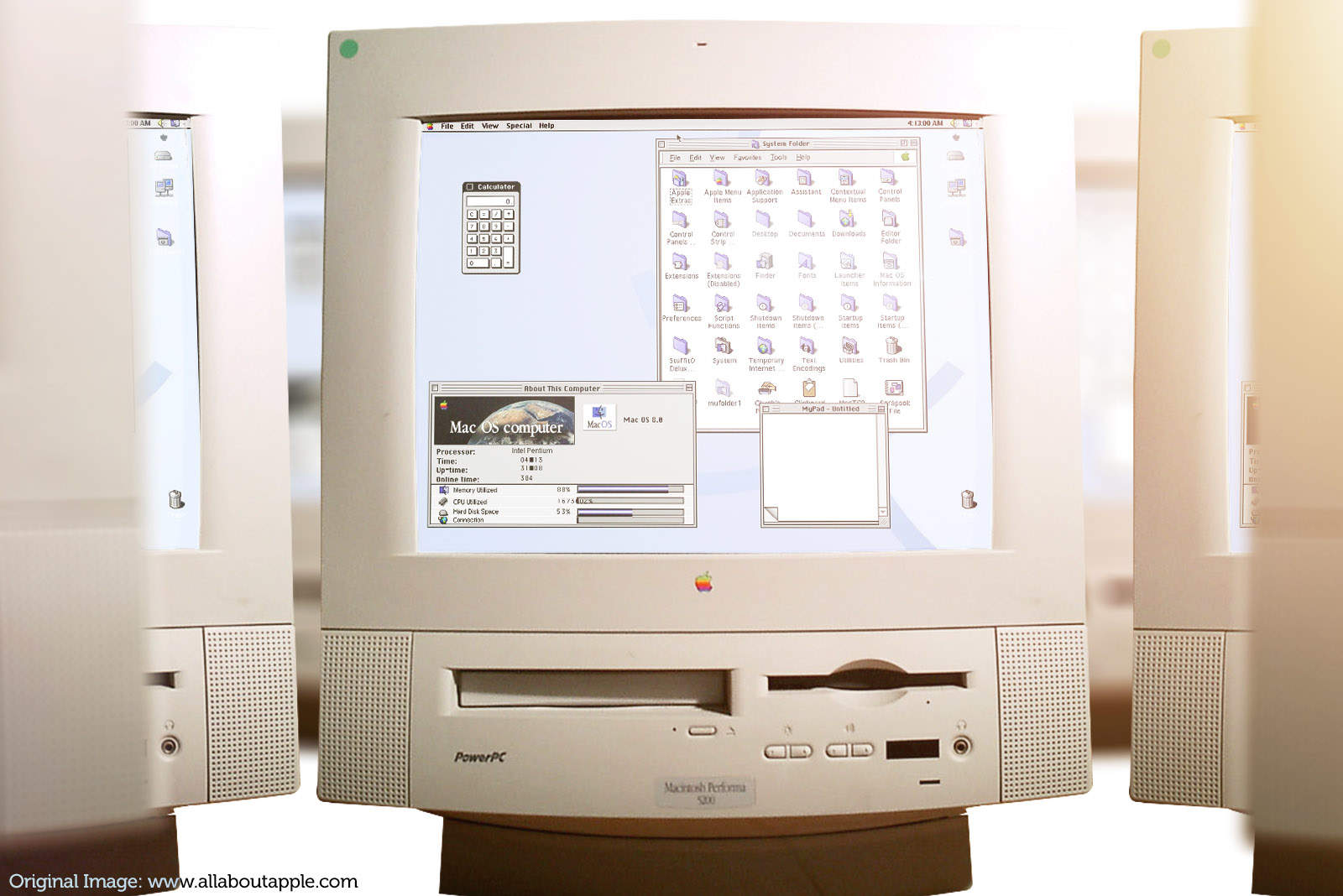
 July 22, 1997: Apple unveils Mac OS 8, its next-gen operating system. The first major operating system refresh for Macintosh since System 7’s release in 1991, it’s destined to become a big hit with users.
July 22, 1997: Apple unveils Mac OS 8, its next-gen operating system. The first major operating system refresh for Macintosh since System 7’s release in 1991, it’s destined to become a big hit with users.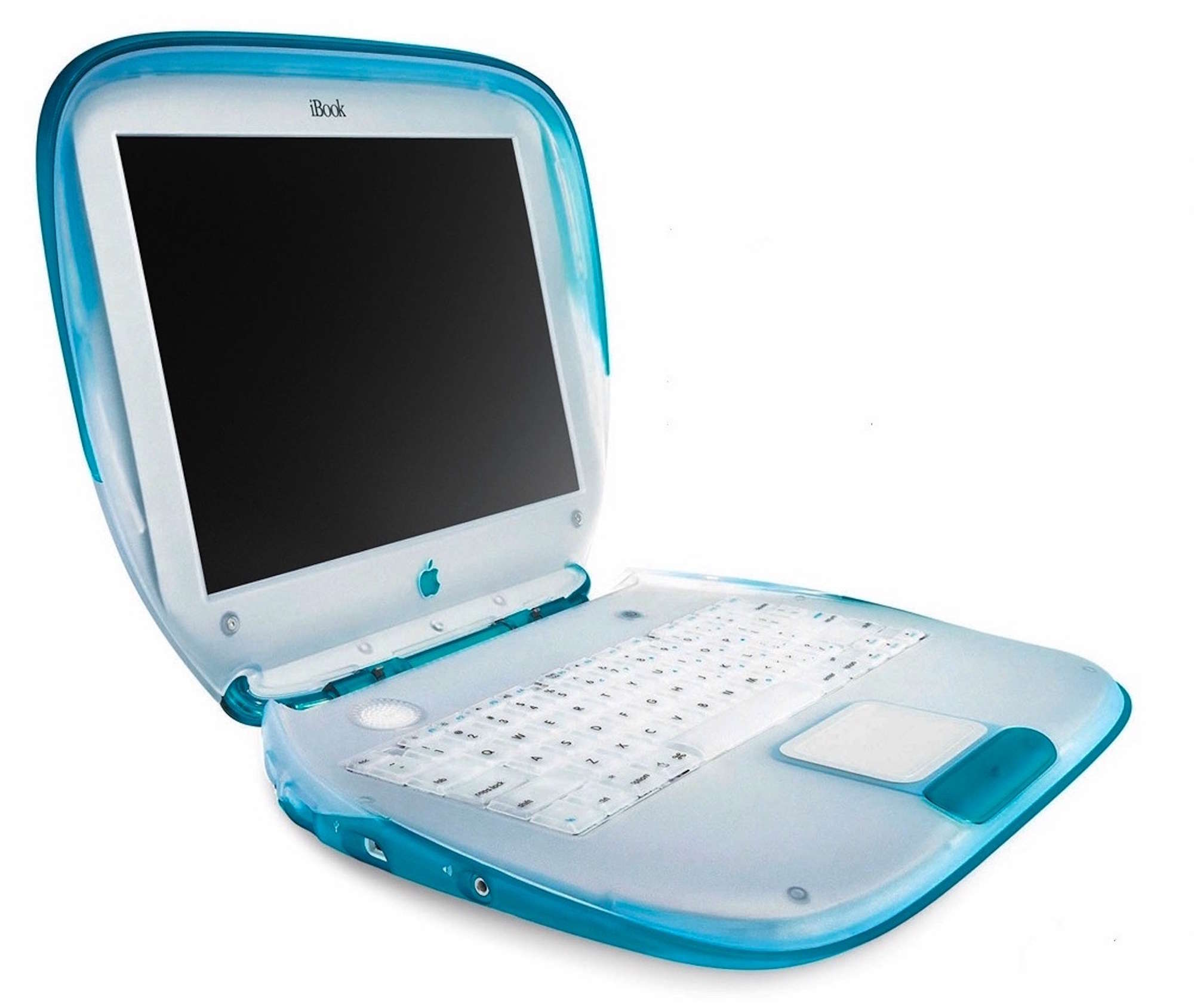
 July 21, 1999: The iBook, Apple’s colorful clamshell laptop that’s a hybrid of the iMac and the PowerBook, arrives and launches a Wi-Fi revolution.
July 21, 1999: The iBook, Apple’s colorful clamshell laptop that’s a hybrid of the iMac and the PowerBook, arrives and launches a Wi-Fi revolution.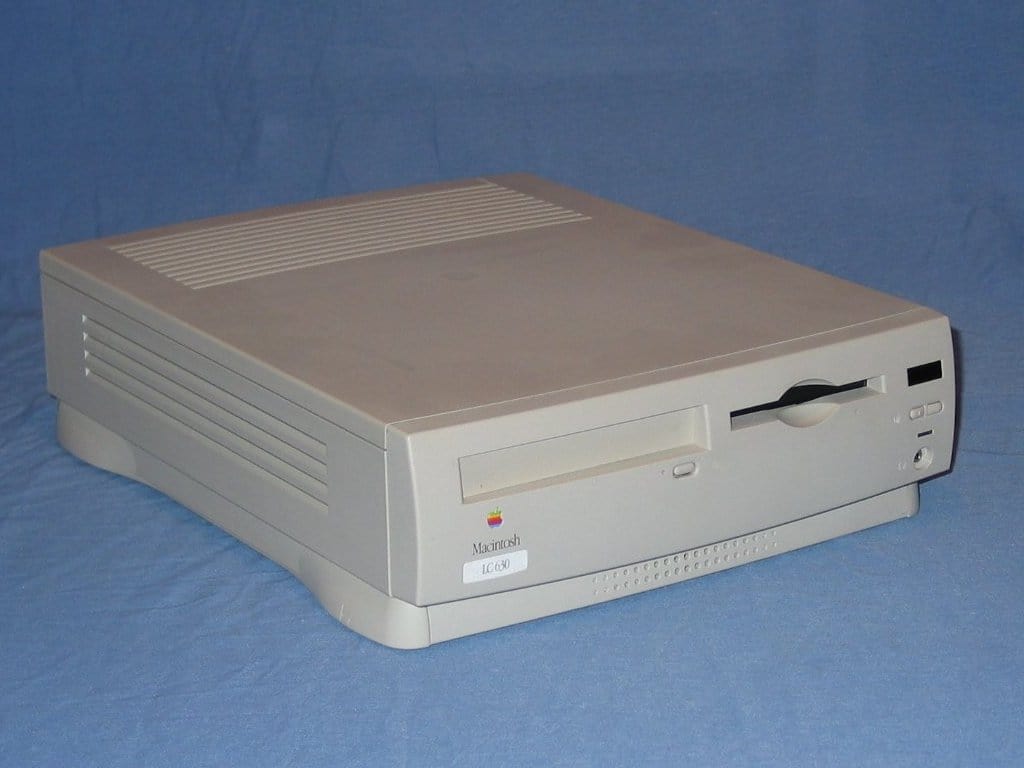
 July 18, 1994: Apple launches the Quadra, Performa and LC 630 Macintoshes, three similar computers with slight differences tailored for the professional, home and educational markets.
July 18, 1994: Apple launches the Quadra, Performa and LC 630 Macintoshes, three similar computers with slight differences tailored for the professional, home and educational markets.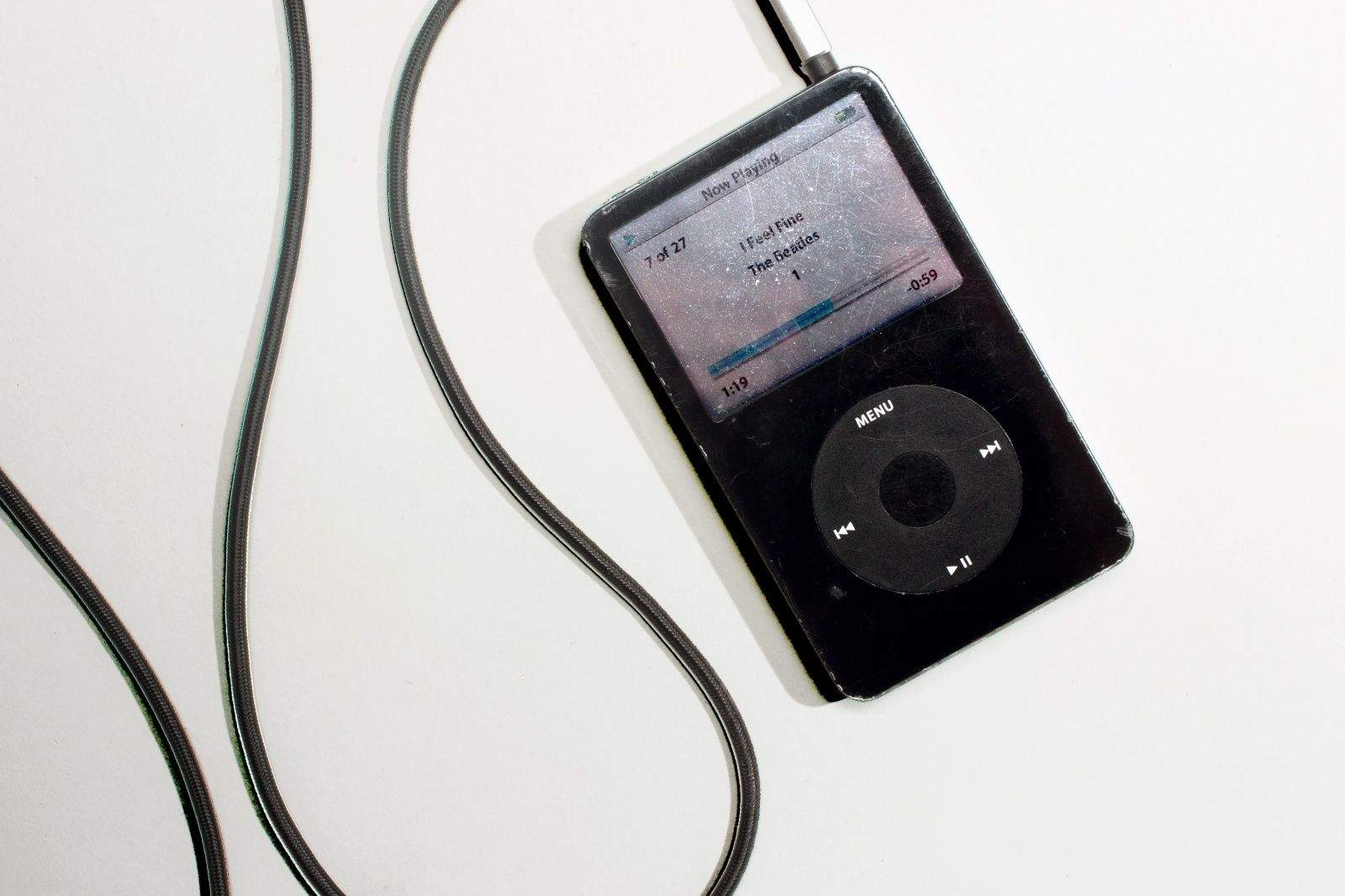
 July 14, 1995: The MP3 file format receives its official name as the new .bit file extension gets changed to .mp3. The technology allows the compression of a standard CD .wav file to one-tenth its original size, courtesy of some smart algorithms.
July 14, 1995: The MP3 file format receives its official name as the new .bit file extension gets changed to .mp3. The technology allows the compression of a standard CD .wav file to one-tenth its original size, courtesy of some smart algorithms.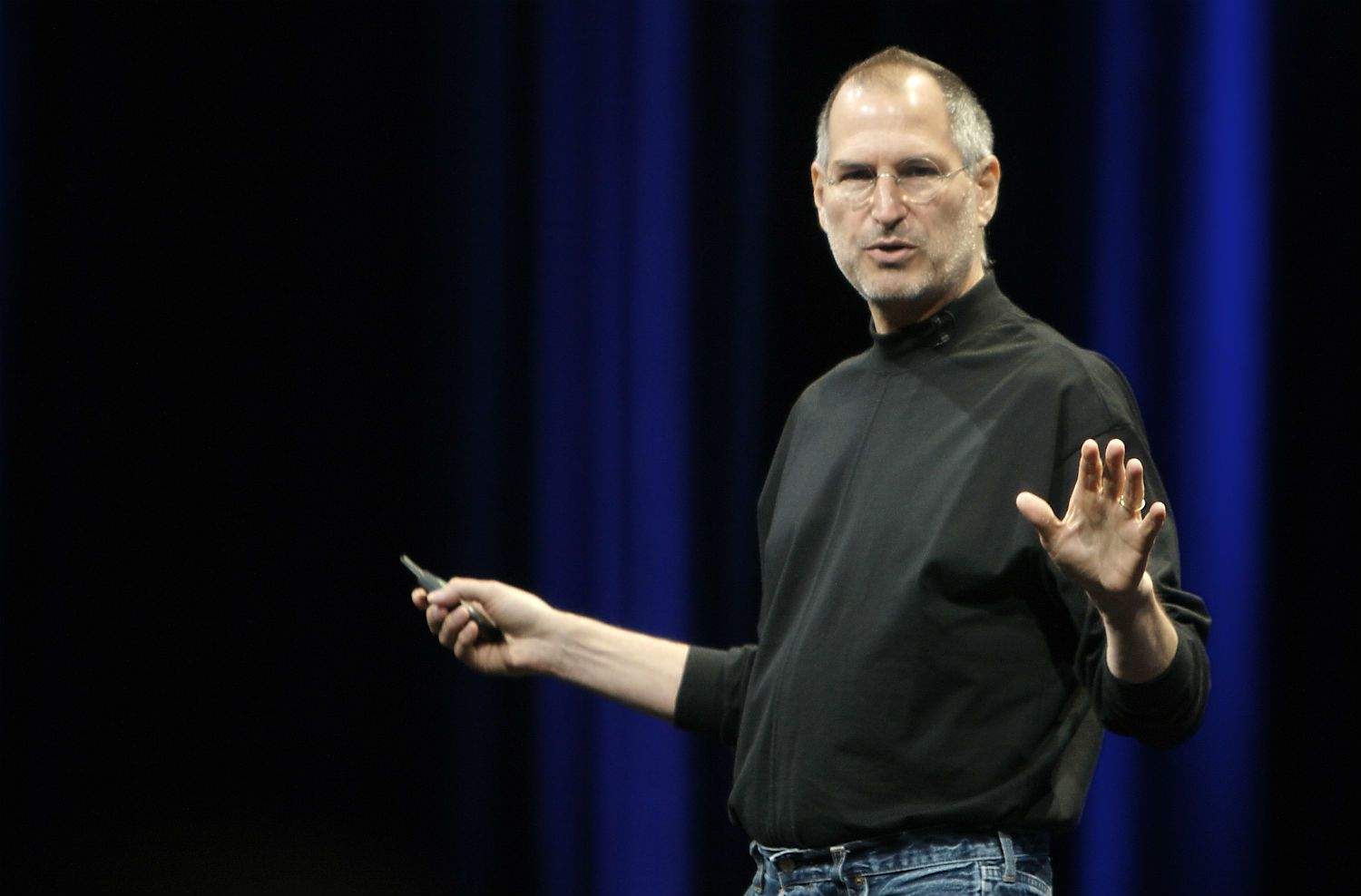
 July 8, 1997: Steve Jobs begins his path to becoming chief executive officer of Apple, after former CEO Gil Amelio
July 8, 1997: Steve Jobs begins his path to becoming chief executive officer of Apple, after former CEO Gil Amelio 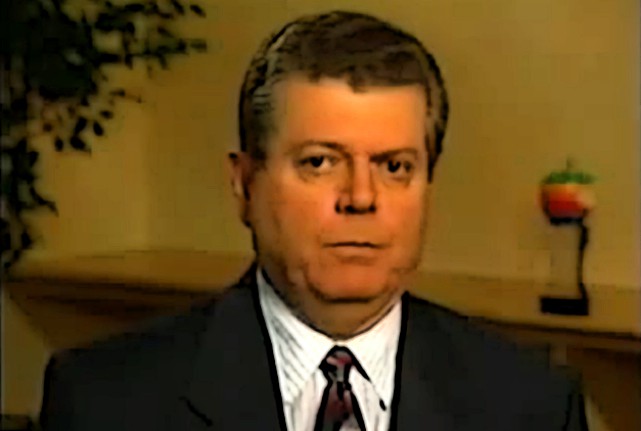
 July 6, 1997: Following a massive quarterly loss for Apple, board member Edgar S. Woolard Jr. calls CEO Gil Amelio and informs him that he needs to step down. “You’ve done a lot to help the company, but the sales haven’t rebounded,” Woolard says.
July 6, 1997: Following a massive quarterly loss for Apple, board member Edgar S. Woolard Jr. calls CEO Gil Amelio and informs him that he needs to step down. “You’ve done a lot to help the company, but the sales haven’t rebounded,” Woolard says.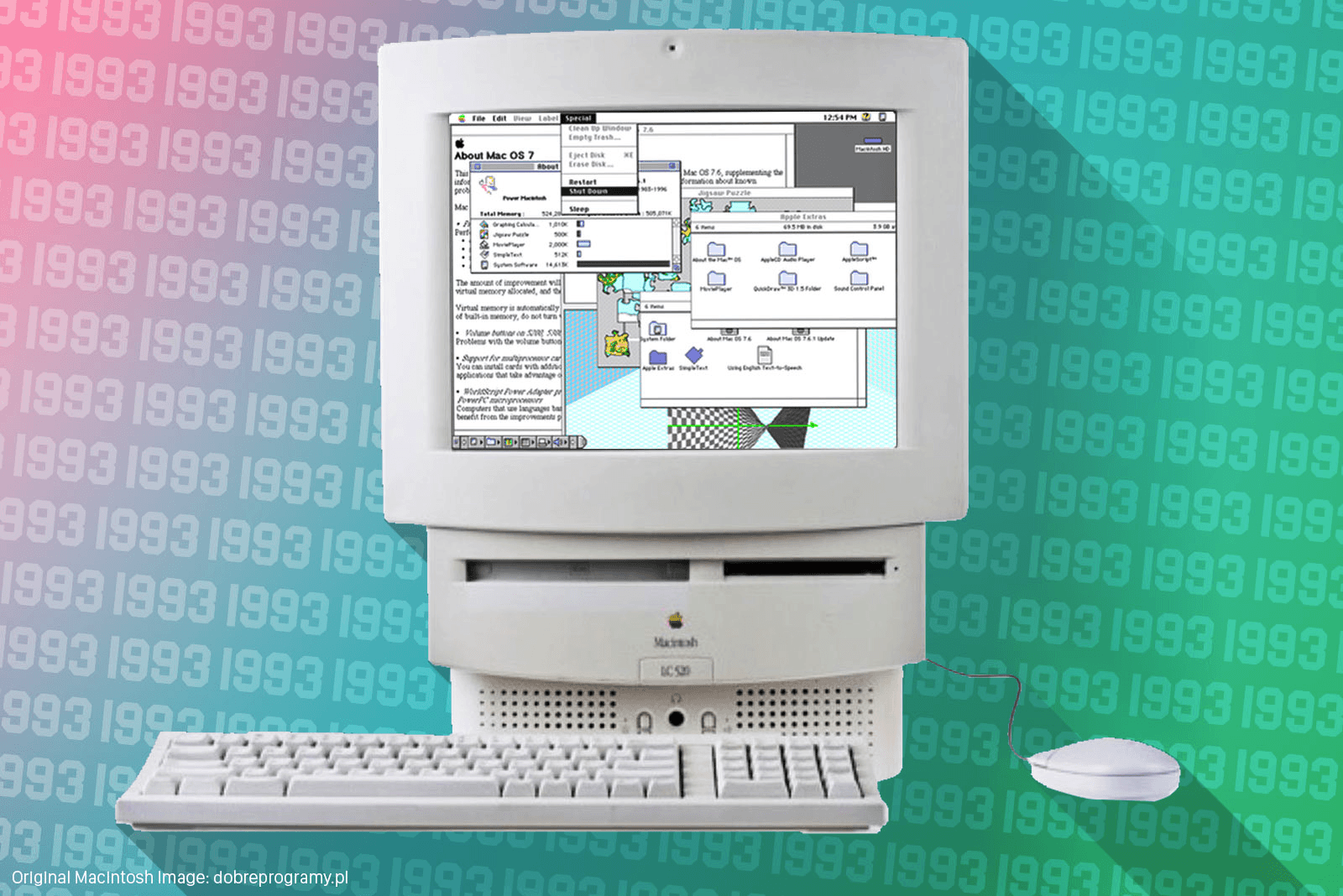
 June 28, 1993: Apple ships the Macintosh LC 520, an “all-in-one” Mac targeted primarily at the education market.
June 28, 1993: Apple ships the Macintosh LC 520, an “all-in-one” Mac targeted primarily at the education market.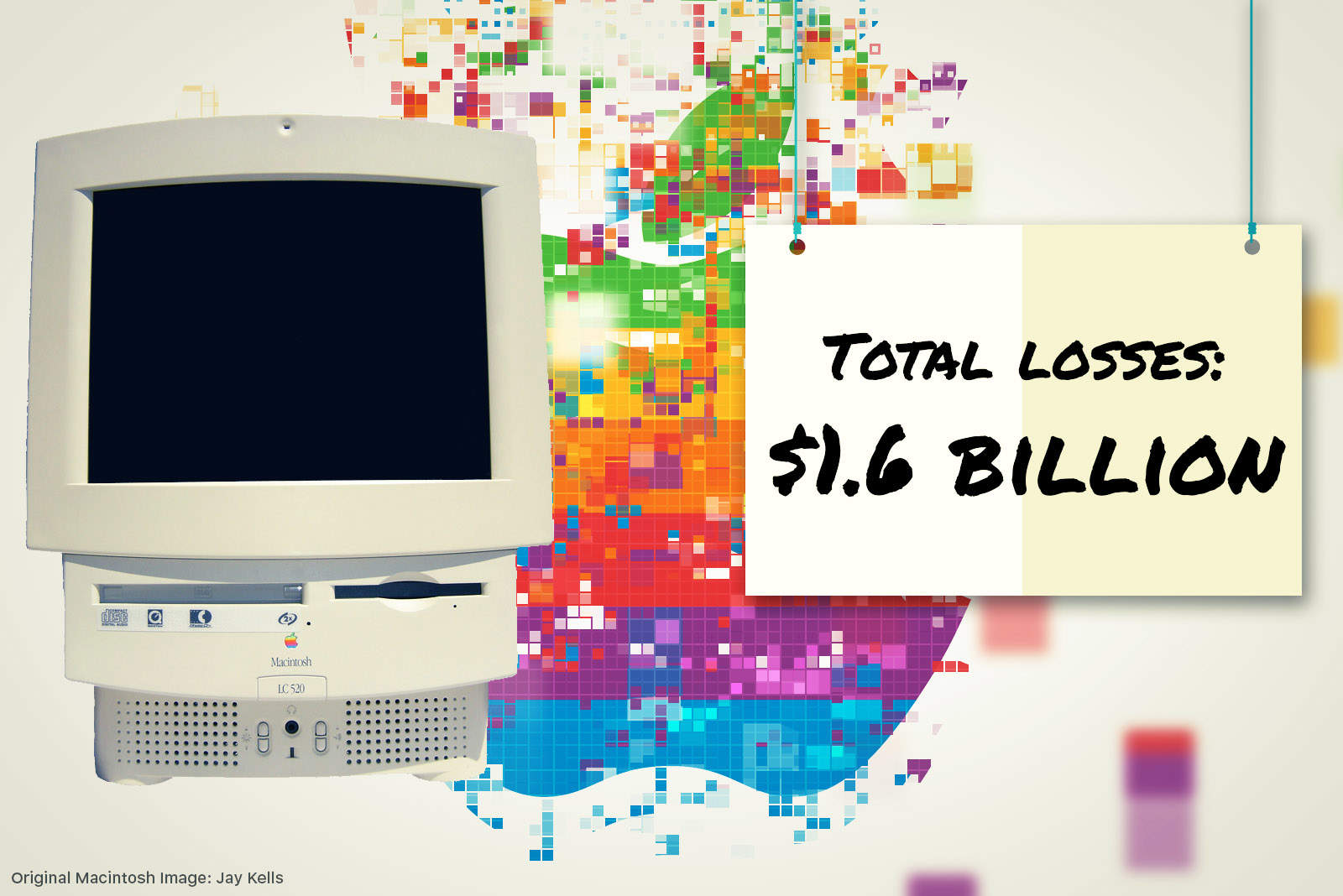
 June 27, 1997: The last day of another disappointing quarter brings an end to CEO Gil Amelio’s 500 days running Apple.
June 27, 1997: The last day of another disappointing quarter brings an end to CEO Gil Amelio’s 500 days running Apple.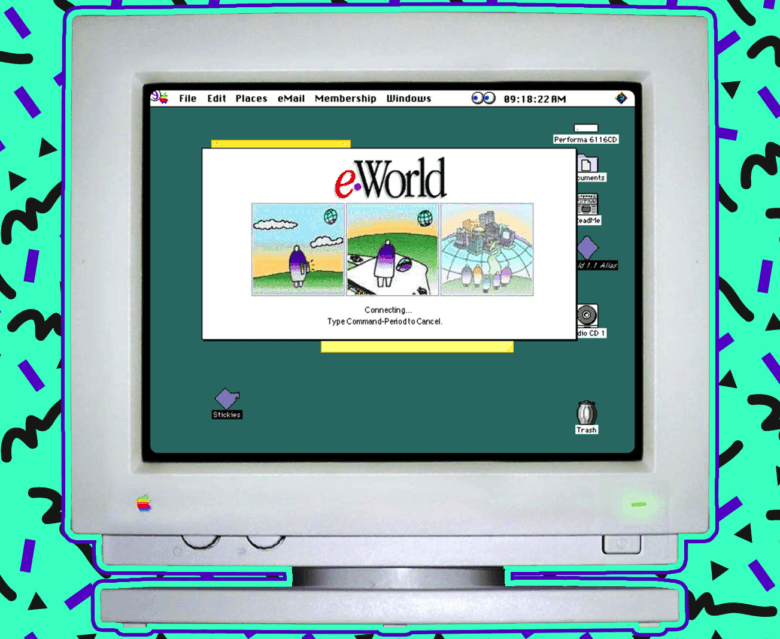
 June 20, 1994: Apple launches eWorld, a subscription service for Mac owners that’s designed to compete with America Online and other nascent online properties.
June 20, 1994: Apple launches eWorld, a subscription service for Mac owners that’s designed to compete with America Online and other nascent online properties.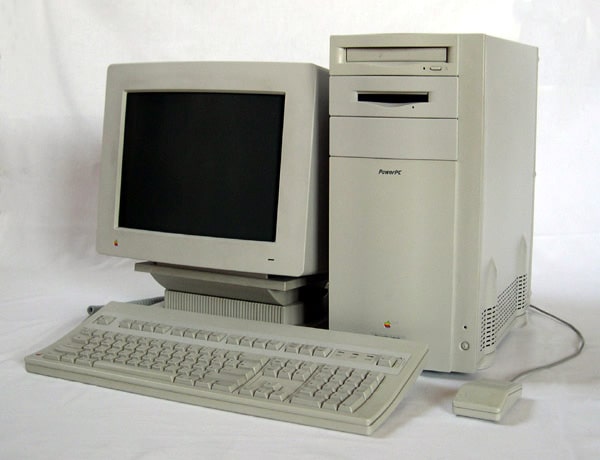
 June 19, 1995: Apple releases the Power Macintosh 9500, a high-end Mac that boasts a second-generation PowerPC chip that’s much faster than its predecessor.
June 19, 1995: Apple releases the Power Macintosh 9500, a high-end Mac that boasts a second-generation PowerPC chip that’s much faster than its predecessor.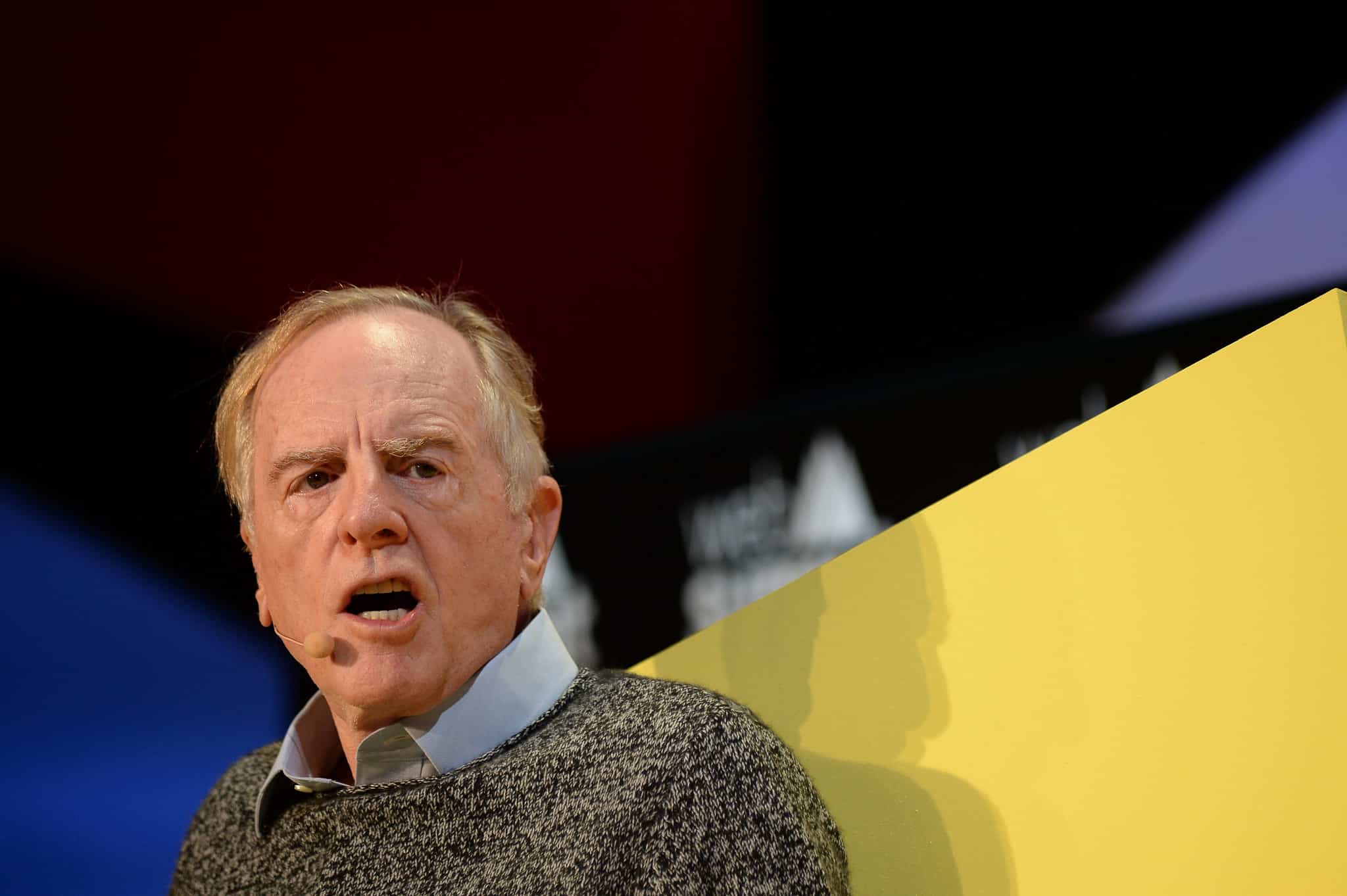
 June 18, 1993: John Sculley steps down as Apple CEO after a 10-year run.
June 18, 1993: John Sculley steps down as Apple CEO after a 10-year run.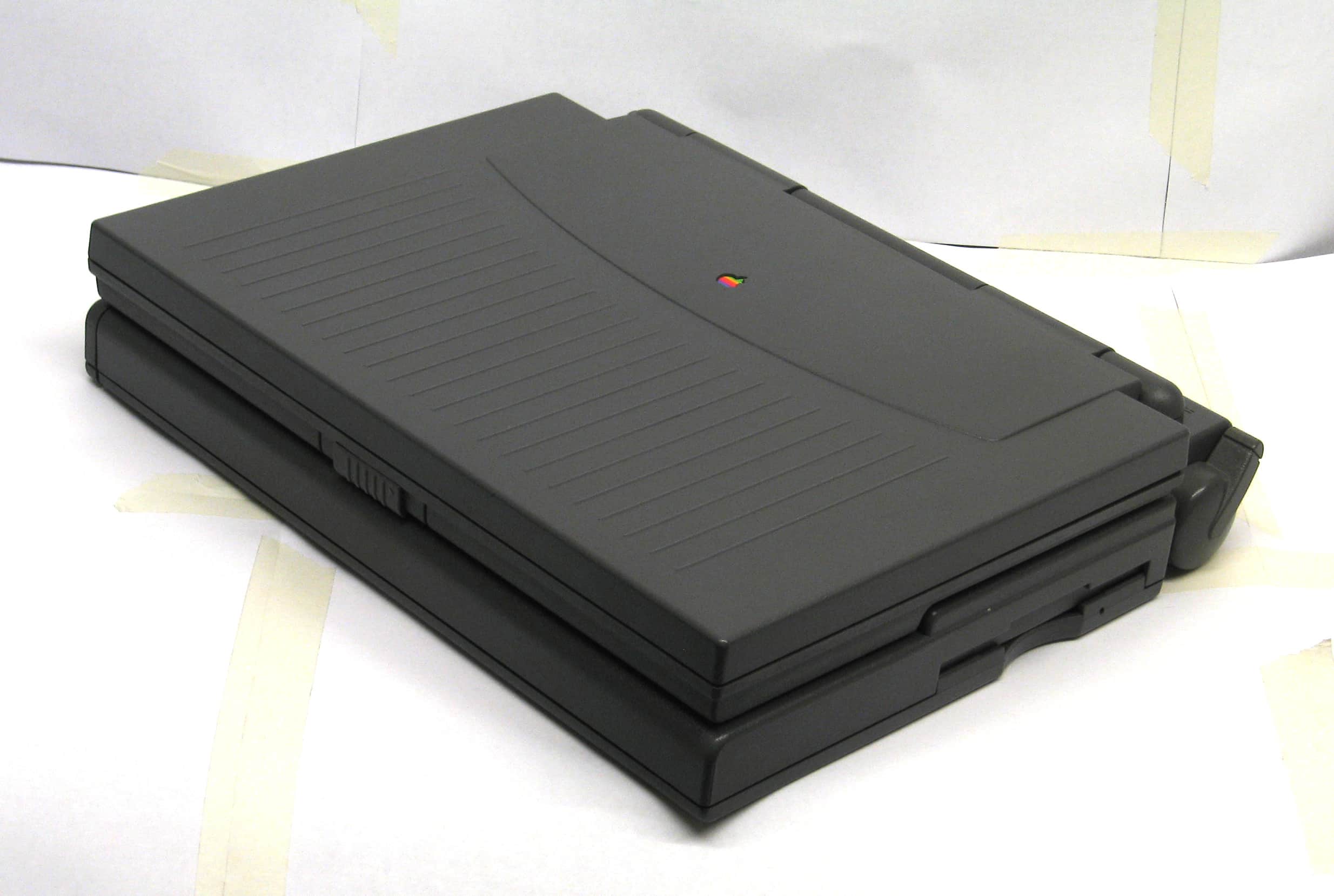
 June 7, 1993: Apple debuts the PowerBook 180c, a solid upgrade that brings a world of dazzling colors to the company’s laptop line.
June 7, 1993: Apple debuts the PowerBook 180c, a solid upgrade that brings a world of dazzling colors to the company’s laptop line. June 4, 1997: Mac clone-maker Power Computing hits its high point — but it’s also the beginning of the end.
June 4, 1997: Mac clone-maker Power Computing hits its high point — but it’s also the beginning of the end.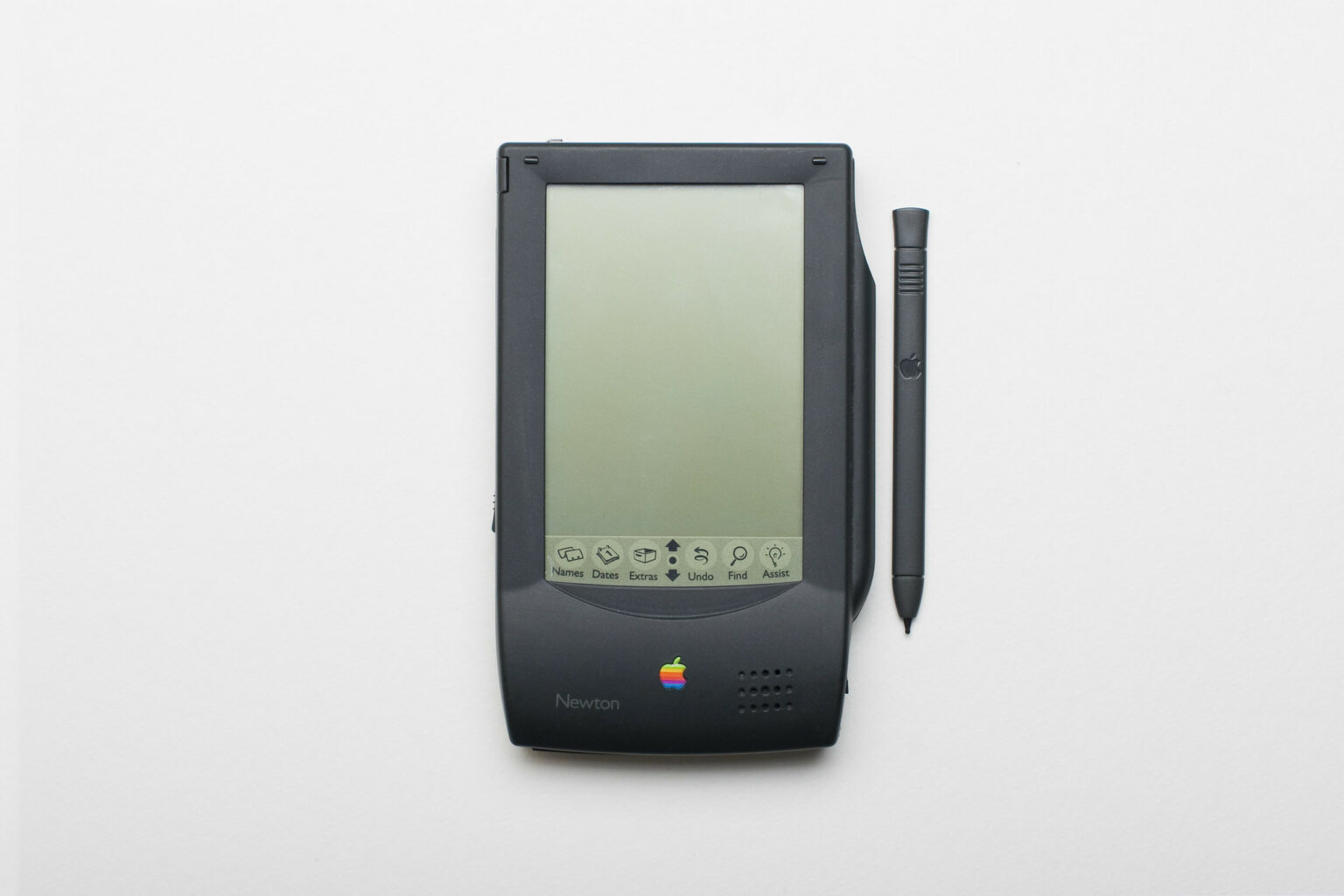
 May 29, 1992: Apple demonstrates the Newton MessagePad for the first time, showing how the upcoming PDA can be used to order a pizza and pull off other time-saving tricks.
May 29, 1992: Apple demonstrates the Newton MessagePad for the first time, showing how the upcoming PDA can be used to order a pizza and pull off other time-saving tricks.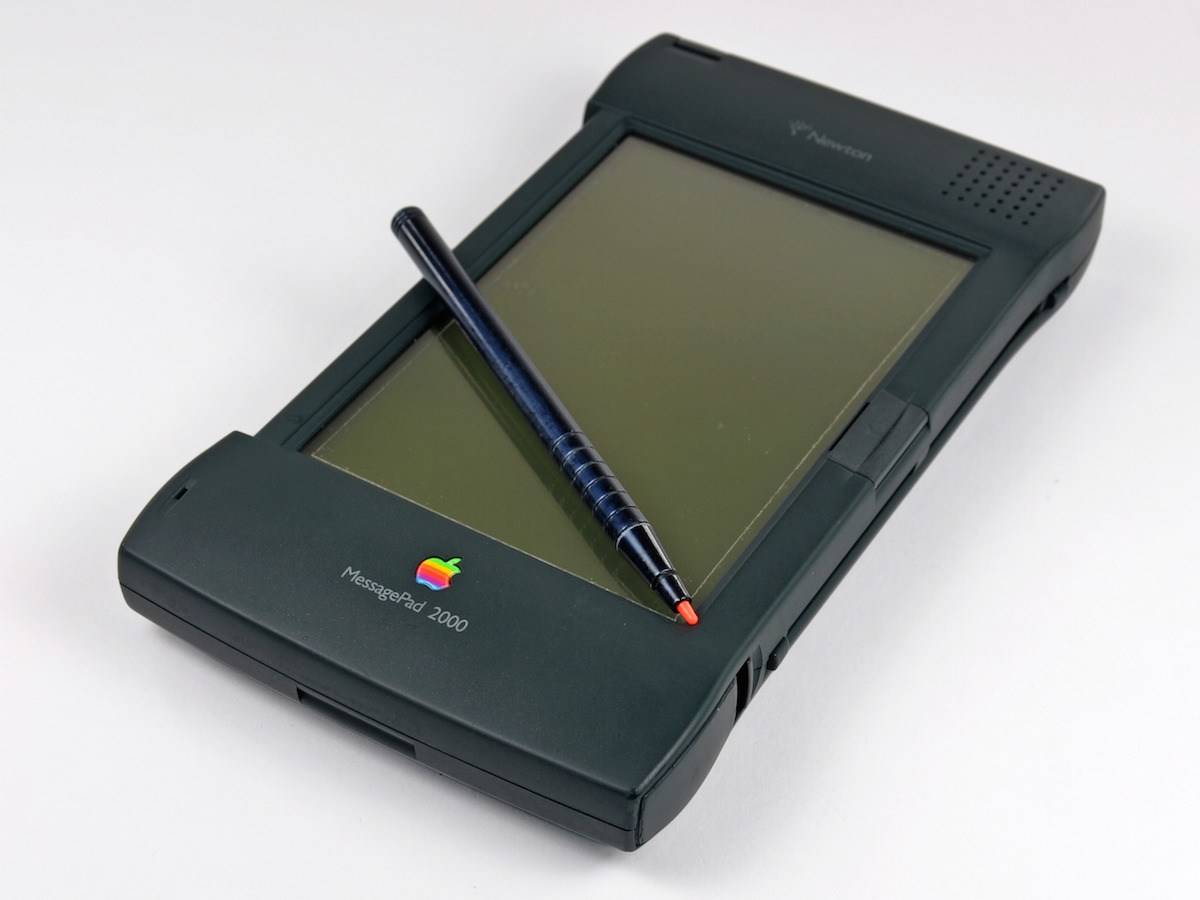
 May 22, 1997: Apple spins off its Newton division. The new company’s first job? Selling the MessagePad 2000 PDA.
May 22, 1997: Apple spins off its Newton division. The new company’s first job? Selling the MessagePad 2000 PDA.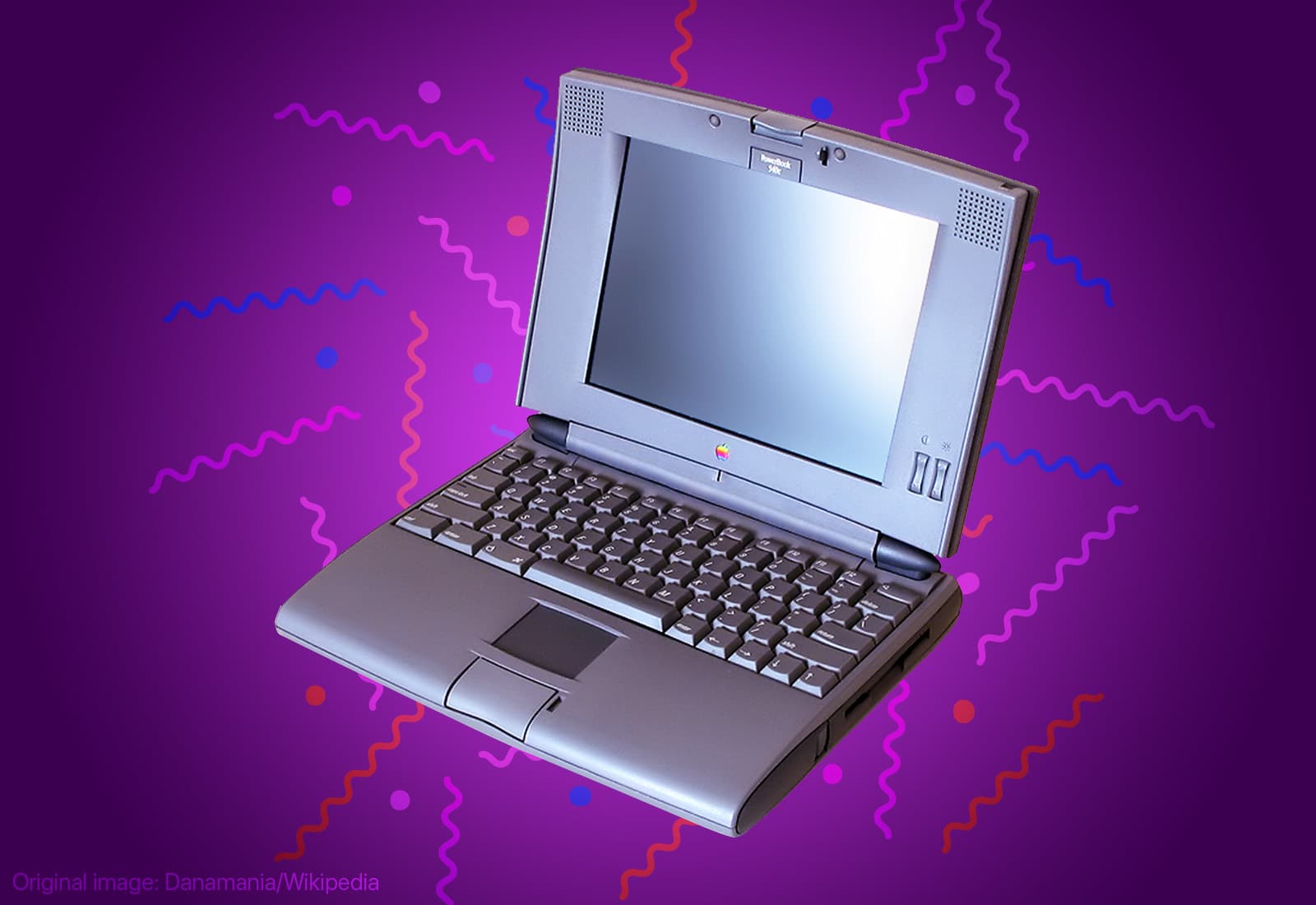
 May 16, 1994: Apple launches the PowerBook 540c, one of the best laptops in the company’s history.
May 16, 1994: Apple launches the PowerBook 540c, one of the best laptops in the company’s history.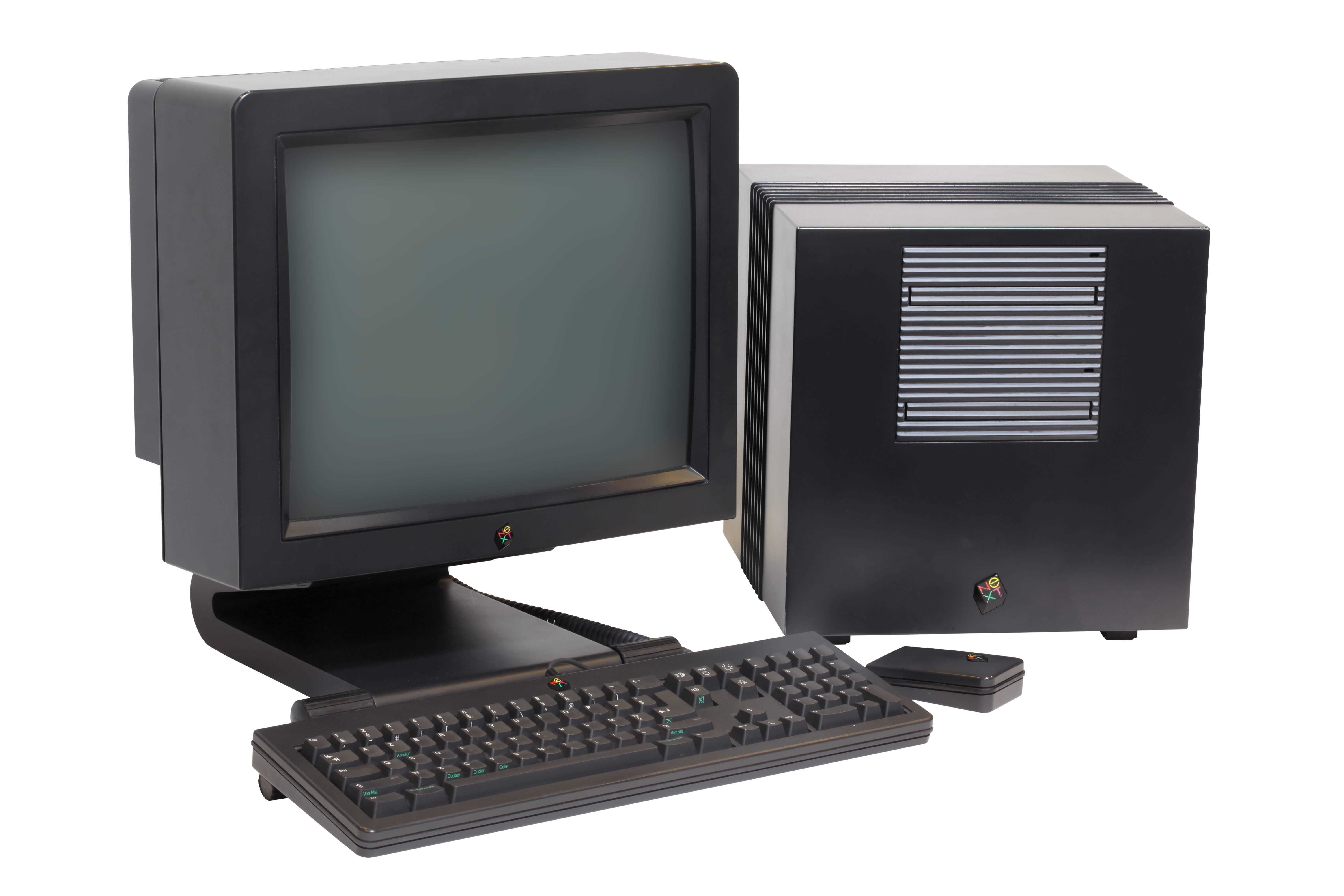
 May 14, 1992: Steve Jobs’ company NeXT runs into trouble as it loses a crucial deal with Businessland after the giant computer retailer closes its stores.
May 14, 1992: Steve Jobs’ company NeXT runs into trouble as it loses a crucial deal with Businessland after the giant computer retailer closes its stores.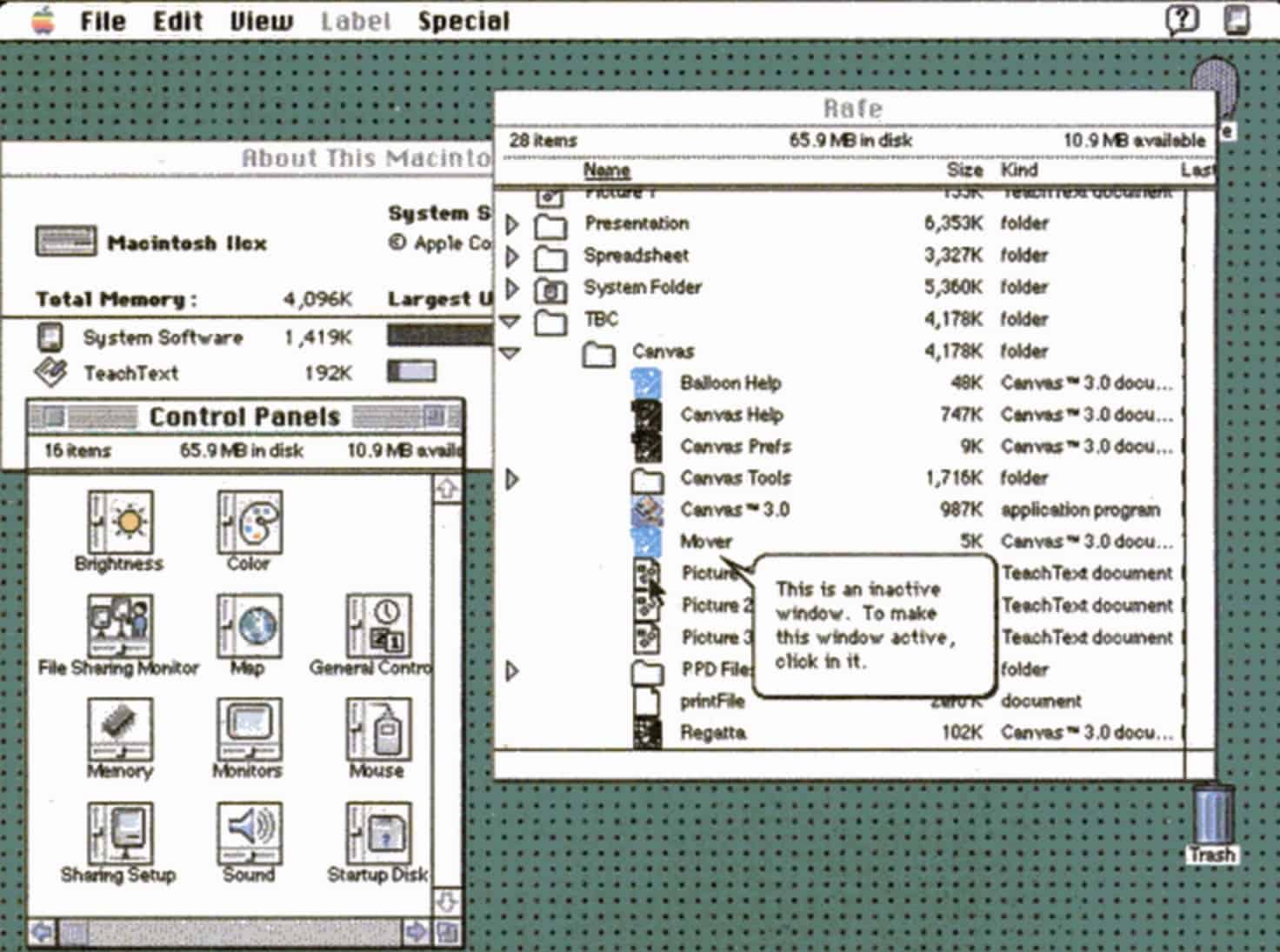
 May 13, 1991: Apple releases System 7, the biggest upgrade to the Mac operating system since the
May 13, 1991: Apple releases System 7, the biggest upgrade to the Mac operating system since the 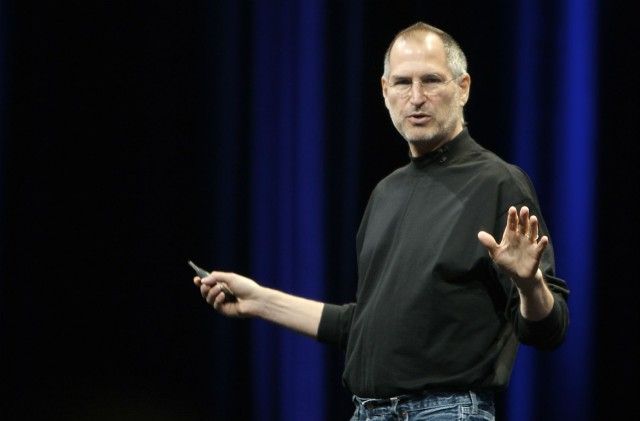
 May 11, 1998: As part of his
May 11, 1998: As part of his 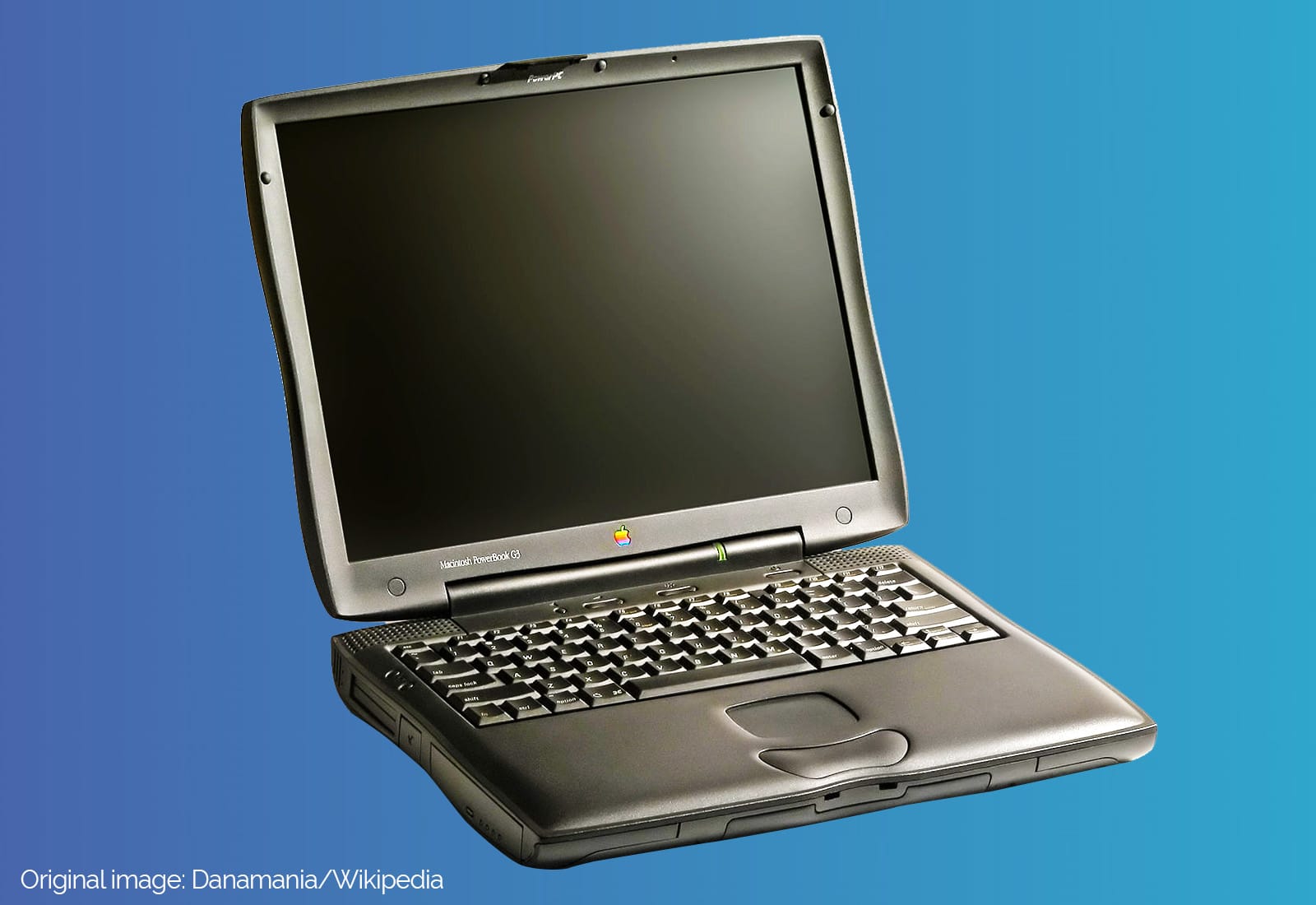
 May 10, 1999: The third-generation PowerBook G3 comes in 20% slimmer and 2 pounds lighter than its predecessor, but most people remember the laptop for its “bronze” keyboard.
May 10, 1999: The third-generation PowerBook G3 comes in 20% slimmer and 2 pounds lighter than its predecessor, but most people remember the laptop for its “bronze” keyboard.